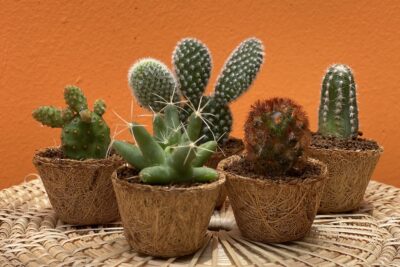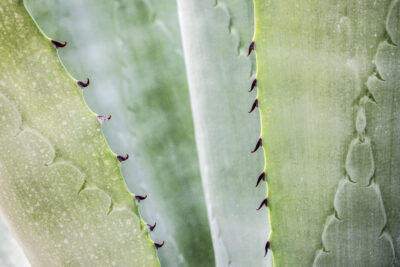
Watering Succulents After Repotting: What You Need to Know

Watering succulents after repotting is an important aspect of their care that can greatly affect their overall health and survival. Succulents are known for their ability to store water in their leaves, stems, or roots, making them highly adaptable to arid conditions. However, when it comes to repotting, the balance of moisture becomes crucial, as overwatering or underwatering can lead to root rot or dehydration.
We will explore the best practices for watering succulents after repotting. We will discuss the factors to consider, such as the type of soil used, the size of the pot, and the specific needs of different succulent species. Additionally, we will provide step-by-step instructions on how to properly water newly repotted succulents, including the frequency and amount of water to use. Whether you are a beginner or an experienced succulent enthusiast, this guide will help you ensure the long-term health of your plants and prevent common watering mistakes.
- Water succulents sparingly after repotting
- Allow the soil to dry completely before watering again
- Be cautious not to overwater newly repotted succulents
- Use well-draining soil to prevent waterlogged roots
- Consider using a spray bottle to mist the soil lightly
- Monitor the succulent's leaves for signs of dehydration
- Adjust watering frequency based on the succulent's needs
- Avoid watering the succulent immediately after repotting
- Gradually increase watering as the succulent adjusts to its new pot
- Water the succulent at the base to prevent water from sitting on the leaves
- Frequently Asked Questions
Water succulents sparingly after repotting
When it comes to succulents, it's important to remember that less is more when it comes to watering. This is especially true after repotting your succulents. Repotting can be a stressful process for these plants as their roots may have been disturbed or damaged during the transplant. Therefore, it's crucial to give them some time to adjust before drenching them with water.
After repotting your succulents, it's best to wait at least a week before watering them again. This allows the roots to heal and adjust to their new environment. During this time, it's important to keep a close eye on the moisture level of the soil. Avoid the temptation to water them right away, as this can lead to overwatering and potentially root rot.
Signs of underwatering and overwatering
It's essential to understand the signs of both underwatering and overwatering to ensure your succulents receive the right amount of water. Underwatering can be characterized by shriveled leaves, dry soil, and a general lack of plumpness in the plant. On the other hand, overwatering can cause yellowing or mushy leaves, a foul smell coming from the soil, and root rot.
Remember, succulents are desert plants that have adapted to survive in arid conditions. They store water in their leaves and stems, allowing them to withstand periods of drought. This is why they prefer soil that is well-draining and require less frequent watering compared to other houseplants.
Watering tips for repotted succulents
- Observe the soil: Before watering your repotted succulents, check the moisture level of the soil by sticking your finger about an inch deep into the soil. If it feels dry, it's time to water. If it still feels slightly moist, wait a few more days.
- Water at the base: When watering your succulents, make sure to pour the water directly into the soil at the base of the plant. Avoid getting water on the leaves and stems, as this can lead to rot and other issues.
- Use a watering can or a narrow spout: To control the amount of water you give to your succulents, opt for a watering can with a narrow spout. This allows for precise and targeted watering, preventing overwatering.
- Don't let water sit in the saucer: After watering, make sure to empty any excess water that collects in the saucer or pot. Succulents do not like to sit in water, as it can lead to root rot.
By following these watering tips and being patient with your repotted succulents, you'll help ensure their health and longevity. Remember, when it comes to succulents, less is more!
 Succulent Care: A Guide to Cliff Cotyledon and Crassulaceae
Succulent Care: A Guide to Cliff Cotyledon and CrassulaceaeAllow the soil to dry completely before watering again
After repotting your succulents, it is crucial to allow the soil to dry completely before watering them again. This is because repotting can disrupt the root system and cause stress to the plant. By giving the soil time to dry out, you are allowing the plant to recover and establish new roots in its new pot.
Be cautious not to overwater newly repotted succulents
When you repot your succulents, it's important to be mindful of their watering needs. Succulents have unique characteristics that allow them to store water in their leaves, stems, or roots, making them more tolerant of drought. However, this also means that they are susceptible to overwatering, especially after being repotted.
After repotting, succulents need time to adjust to their new environment and establish their root system. During this period, it's crucial to be cautious and avoid overwatering, as it can lead to root rot and other issues.
Why is overwatering a problem for newly repotted succulents?
Overwatering can be detrimental to succulents for several reasons:
 Can Succulents Be Revived After Drying Out?
Can Succulents Be Revived After Drying Out?- Root rot: Excess water can cause the roots to become waterlogged, leading to root rot. This can result in the death of the plant if not addressed promptly.
- Lack of oxygen: Overwatering can saturate the soil and deprive the roots of oxygen, leading to suffocation and root damage.
- Weak root development: Succulents need time to establish their roots after being repotted. Overwatering can hinder this process and weaken the plant's overall health.
How often should you water newly repotted succulents?
There isn't a one-size-fits-all answer to this question, as the watering frequency can depend on various factors such as climate, pot size, and succulent species. However, a general guideline is to wait at least a week before watering your newly repotted succulents.
During this initial period, it's important to monitor the moisture level of the soil. Avoid watering if the soil feels still damp or if the succulent leaves appear plump and turgid. Instead, allow the soil to dry out slightly before giving your succulents a thorough watering.
How can you tell if your succulents need water after repotting?
To determine if your succulents need water after repotting, you can follow these indicators:
- Soil dryness: Check the moisture level of the soil by inserting your finger about an inch into the soil. If it feels dry, it's a good indication that your succulents need watering.
- Leaf appearance: Look for signs of dehydration in the leaves. If they appear wrinkled, shriveled, or wilted, it's a clear indication that your succulents need water.
- Weight of the pot: Lift the pot and feel its weight. If it feels significantly lighter than when you first repotted it, it's likely that your succulents need watering.
Remember, it's always better to underwater than to overwater succulents. They are more resilient and can tolerate dry conditions better than excessive moisture. By being cautious and observant, you can ensure the successful establishment and growth of your newly repotted succulents.
Use well-draining soil to prevent waterlogged roots
 Can Repotting Revive a Dead Succulent?
Can Repotting Revive a Dead Succulent?When it comes to repotting succulents, one of the most crucial factors to consider is the type of soil you use. Succulents thrive in well-draining soil that allows excess moisture to escape quickly. This is important because succulents are highly susceptible to root rot if their roots sit in water for too long.
So, what exactly constitutes well-draining soil for succulents? Ideally, you should opt for a mix that comprises equal parts of potting soil, coarse sand, and perlite. This combination creates a light and airy texture that allows water to flow through easily, preventing the roots from becoming waterlogged.
When repotting your succulents, it's essential to choose a pot with drainage holes at the bottom. These holes allow excess water to escape, ensuring that the soil stays moist but not overly saturated. If you cannot find a pot with drainage holes, you can create them yourself using a drill or by placing a layer of pebbles at the bottom of the pot to facilitate drainage.
Remember, using well-draining soil and providing proper drainage is vital for the health and longevity of your succulents. By ensuring that the roots don't sit in water for extended periods, you can prevent root rot and help your succulents thrive.
Consider using a spray bottle to mist the soil lightly
After repotting your succulents, it's important to take proper care of them to ensure their health and growth. One method that can be particularly beneficial is misting the soil lightly with water using a spray bottle.
Succulents have unique water requirements due to their ability to store water in their leaves and stems. They are adapted to thrive in arid conditions and do not tolerate excessive moisture well. Therefore, misting the soil instead of drenching it can be a more suitable approach.
 How to Safely Ship a Succulent: Tips for Mailing Plants
How to Safely Ship a Succulent: Tips for Mailing PlantsMisting allows for gentle hydration without overwhelming the plant's root system. It provides a controlled amount of moisture, preventing the soil from becoming waterlogged. This method is especially helpful during the initial days after repotting when succulents may experience some shock or stress.
Here are some tips to follow when misting your succulents:
- Use a clean spray bottle to prevent any contamination or residue that could harm your plants.
- Fill the spray bottle with room temperature water, as using cold water can shock the plants.
- Hold the spray bottle a few inches away from the soil surface and mist the soil lightly. Avoid spraying directly on the leaves to prevent rot or fungal diseases.
- Mist the soil in the morning or early afternoon when the temperature is cooler, allowing the water to evaporate before the evening. This helps prevent the growth of mold or fungus.
- Observe the moisture level of the soil and adjust your misting frequency accordingly. Succulents prefer slightly dry conditions, so be mindful not to overwater them.
Remember that misting is just one method of watering your succulents after repotting. It's essential to assess the specific needs of each plant and adjust your watering routine accordingly. Monitor the condition of the leaves and the overall health of the succulents to ensure they are receiving the right amount of water.
By using a spray bottle to mist the soil lightly, you can provide your repotted succulents with the hydration they need without risking overwatering. This gentle approach promotes healthy growth and helps your succulents thrive in their new pots.
Monitor the succulent's leaves for signs of dehydration
After repotting your succulent, it is crucial to monitor the leaves for any signs of dehydration. Succulents have thick, fleshy leaves that store water, allowing them to survive in arid environments. However, during the repotting process, some of the roots may have been damaged, making it harder for the plant to absorb water.
If you notice the leaves becoming wrinkled, shriveled, or discolored, it is a clear indication that your succulent is dehydrated. In such cases, it is important to take immediate action to prevent any further damage to the plant.
 Succulent Transplant Shock: Causes, Symptoms, and Solutions
Succulent Transplant Shock: Causes, Symptoms, and SolutionsWatering the repotted succulent
When it comes to watering a repotted succulent, you need to be cautious and follow certain guidelines:
- Wait for a few days: After repotting, it is recommended to wait for a few days before watering the succulent. This allows the plant to recover from the shock of being repotted and gives the roots time to heal.
- Check the soil moisture: Before watering, always check the moisture level of the soil. Insert your finger about an inch into the soil, and if it feels dry, it's time to water your succulent. However, if the soil is still moist, hold off on watering.
- Water sparingly: When watering a repotted succulent, it's important not to overdo it. Succulents thrive in well-draining soil, and excessive watering can lead to root rot. Water the succulent until you see water draining out of the pot's drainage holes, then stop.
- Allow the soil to dry out: After watering, allow the soil to dry out completely before watering again. Succulents prefer a dry and well-drained environment, so it's crucial to avoid waterlogged soil.
By following these watering guidelines, you can ensure that your repotted succulent receives the right amount of moisture without risking its health. Remember, each succulent species may have different water requirements, so it's always a good idea to research the specific needs of your succulent to provide optimal care.
Adjust watering frequency based on the succulent's needs
One of the most important factors to consider when it comes to watering succulents after repotting is adjusting the watering frequency based on the needs of the succulent. Each succulent has different water requirements, so it's crucial to understand the specific needs of your plant.
After repotting, succulents may undergo some stress as they adjust to their new environment. During this period, it's best to water them sparingly to avoid overwatering, which can lead to root rot.
To determine how often you should water your succulent after repotting, consider factors such as the type of succulent, the potting mix used, and the environmental conditions. Succulents that have thick leaves or stems, such as jade plants or echeverias, generally require less frequent watering compared to succulents with thinner leaves.
 Caring for Succulents Planted in a Fire Stick: A Comprehensive Guide
Caring for Succulents Planted in a Fire Stick: A Comprehensive GuideAdditionally, the type of potting mix you used during repotting plays a role in watering frequency. Well-draining soil mixes that contain materials like perlite or pumice allow for better water drainage, preventing the roots from sitting in water for too long.
The environmental conditions, such as temperature and humidity, also affect the watering needs of succulents. During hot and dry weather, succulents may require more frequent watering, while cooler and more humid conditions may necessitate less frequent watering.
It's essential to monitor the moisture levels of the soil before watering your succulent after repotting. Stick your finger about an inch into the soil, and if it feels dry, it's time to water. However, if the soil still feels slightly moist, it's best to wait a bit longer before watering.
Remember that overwatering is one of the leading causes of succulent death. It's better to underwater than to overwater, as succulents are adapted to survive in arid conditions and can tolerate drought better than soggy conditions.
Adjusting the watering frequency based on the succulent's needs is crucial after repotting. Consider the type of succulent, potting mix, and environmental conditions to determine the appropriate watering schedule. Remember to monitor the soil's moisture levels and avoid overwatering to ensure the healthy growth and survival of your succulents.
Avoid watering the succulent immediately after repotting
After repotting your succulent, it is important to avoid watering it immediately. This is because repotting can disturb the roots and cause them to become more vulnerable to root rot if exposed to excessive moisture. By allowing the succulent to settle in its new pot for a few days, you give the roots time to heal and adjust to their new environment.
 Succulent Care 101: Troubleshooting Brown Tips and Effective Fixes
Succulent Care 101: Troubleshooting Brown Tips and Effective FixesGradually increase watering as the succulent adjusts to its new pot
After repotting your succulent, it's important to adjust its watering routine to ensure its proper growth and health. Succulents have unique water requirements, and these can change slightly after being transplanted into a new pot.
One key consideration is to gradually increase watering as the succulent adjusts to its new pot. This is because repotting can sometimes disturb the roots, causing stress to the plant. By slowly increasing watering, you give the succulent time to recover and adapt to its new environment.
To do this, start by giving the succulent a light watering immediately after repotting. This initial watering helps settle the soil and encourages root establishment. However, be careful not to overwater at this stage as the succulent's roots may still be adjusting.
Over the next few weeks, monitor the moisture levels in the soil regularly. Use your finger or a moisture meter to check if the top inch of soil is dry before watering again. If the soil feels damp, it's best to wait a little longer before watering to avoid waterlogged roots.
As the succulent begins to establish its new roots and shows signs of growth, you can gradually increase the frequency of watering. This can be done by watering slightly more often, but still ensuring the soil has dried out between waterings.
It's important to remember that succulents are adapted to survive in arid conditions, and they are more prone to root rot from overwatering than underwatering. Therefore, it's always better to underwater than overwater your succulent.
 Prevent Succulent Overgrowth: Tips for Maintaining the Perfect Size
Prevent Succulent Overgrowth: Tips for Maintaining the Perfect SizeFurthermore, the type of pot and soil you use can also affect the watering needs of your succulent. Well-draining pots and soil mixes specifically designed for succulents can help prevent water retention and promote healthy root growth.
Overall, the key is to observe and adjust the watering routine based on your succulent's specific needs. By gradually increasing watering, you can provide the optimal conditions for your succulent to thrive after repotting.
Water the succulent at the base to prevent water from sitting on the leaves
When it comes to watering succulents after repotting, it's important to water them at the base rather than from above. This is because succulents, with their thick and fleshy leaves, are prone to rotting if water sits on their leaves for too long.
To properly water your succulent after repotting, pour water directly into the soil at the base of the plant. Make sure to thoroughly soak the soil until water drains out from the bottom of the pot. This will ensure that the roots are getting the water they need, while minimizing the risk of water lingering on the leaves.
By watering at the base, you are also encouraging the succulent to develop a strong root system. The roots will naturally grow towards the water source, allowing the plant to establish itself firmly in its new pot.
Signs of overwatering
Overwatering succulents can lead to various issues, so it's important to keep an eye out for signs that your plant is receiving too much water. Some common signs of overwatering include:
 Signs of Sun Damage in Succulents: How to Identify and Prevent it
Signs of Sun Damage in Succulents: How to Identify and Prevent it- Yellowing or wilting leaves: If the leaves of your succulent start to turn yellow or become limp, it could be a sign of overwatering.
- Soft and mushy leaves: Overwatered succulents may develop soft and mushy leaves that feel squishy to the touch.
- Root rot: If you notice a foul smell or mushy roots when you remove the succulent from its pot, it may be suffering from root rot caused by overwatering.
- Mold or fungus: Excessive moisture can create a favorable environment for mold or fungus to grow on the leaves or in the soil.
If you observe any of these signs, it's crucial to adjust your watering routine to prevent further damage to your succulent.
How often to water after repotting
The frequency of watering your succulent after repotting will depend on factors such as the type of succulent, the size of the pot, and the environmental conditions it is exposed to. However, as a general rule of thumb, it's best to wait until the soil is completely dry before watering again.
Before watering your succulent, always check the moisture level of the soil by sticking your finger about an inch into the soil. If it feels dry, it's time to water your succulent. If it still feels moist, wait a few more days before watering.
Remember, succulents are designed to withstand periods of drought, so it's better to underwater them than to overwater. When in doubt, it's always safer to err on the side of caution and water less frequently.
By following these guidelines and watering your succulent at the base after repotting, you can ensure the health and longevity of your plant.
Frequently Asked Questions
1. How often should I water my succulents after repotting?
After repotting, it's best to wait for a week before watering your succulents to allow them to settle into their new soil. Then, water sparingly, only when the soil is completely dry.
 Can Split Rock Succulents Develop Wrinkles?
Can Split Rock Succulents Develop Wrinkles?2. Can I mist my succulents instead of watering them after repotting?
Misting is not recommended after repotting, as it only provides surface moisture and does not reach the roots. It's best to water directly at the base of the plant to ensure proper hydration.
3. How can I tell if my succulents need watering after repotting?
You can check if your succulents need watering by inserting your finger into the soil up to the first knuckle. If the soil feels completely dry, it's time to water. However, if it still feels slightly moist, it's best to wait a bit longer.
4. Can overwatering harm succulents after repotting?
Yes, overwatering can be detrimental to succulents after repotting. It can lead to root rot and other issues. It's important to let the soil dry out between waterings and avoid excessive moisture in order to keep your succulents healthy.
If you want to read more articles similar to Watering Succulents After Repotting: What You Need to Know, you can visit the Care and Maintenance category.






You Must Read